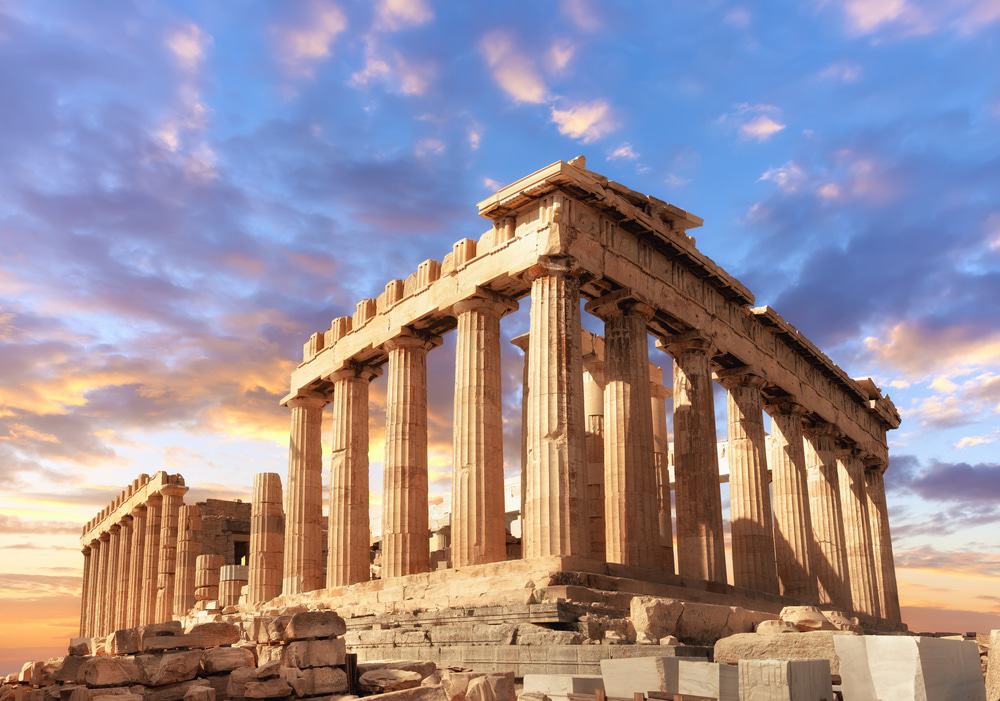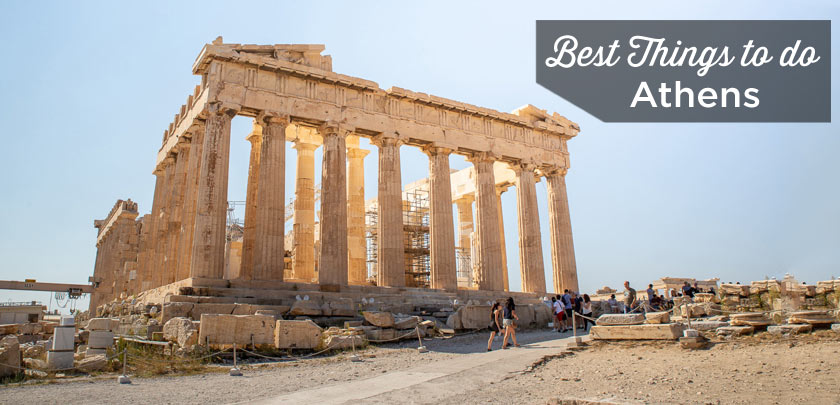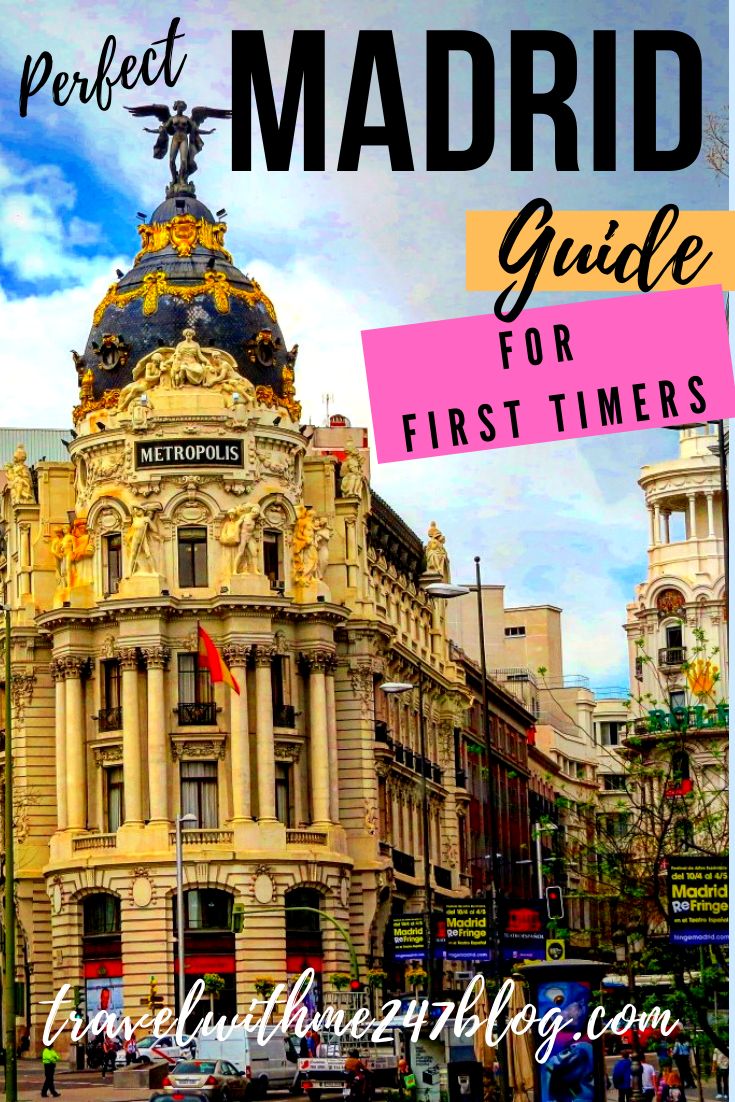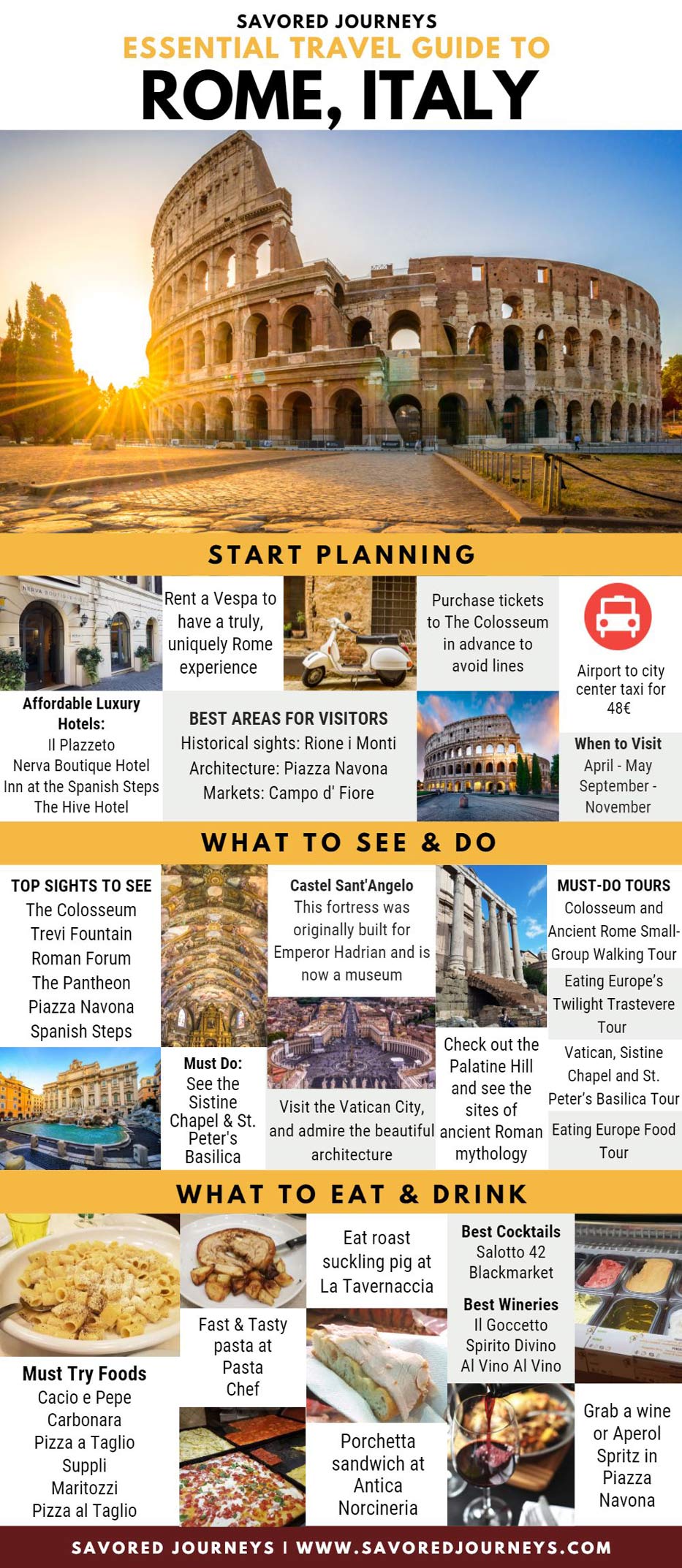
Athens, the venerable capital of Greece, is a city that pulses with an energy born from millennia of human endeavor. It is a place where the foundations of Western civilization were laid, where democracy was born, philosophy flourished, and art reached unparalleled heights. Yet, Athens is far from a relic of the past; it is a dynamic, bustling metropolis where ancient wonders stand proudly alongside contemporary street art, chic cafes, and a vibrant nightlife. For any traveler seeking to immerse themselves in history, culture, and an authentic Mediterranean experience, Athens offers an intoxicating blend of old and new, a journey through time that captivates and inspires.
This comprehensive guide will navigate you through the best places to visit in Athens, delving into its rich history, showcasing its iconic attractions, offering essential travel tips, advising on the best time to visit, suggesting ideal accommodations, tantalizing your taste buds with local cuisine, and explaining the city’s transportation options.
A Journey Through Time: Athens’ Enduring History
Related Articles about Athens: Where Ancient Echoes Meet Modern Vibrancy:
- Oslo: A Symphony of Fjords, Art, and Nordic Charm – Your Ultimate Travel Guide
- Lisbon: A City Steeped in History, Bathed in Sunlight, and Bursting with Charm
- Unveiling the Majesty: A Guide to the Best Tourist Attractions in the United Kingdom
- Laos: A Symphony of Serenity, Spirituality, and Untamed Beauty
- Best tourist attractions in Myanmar
Athens’ story is a tapestry woven from countless threads, each representing a distinct era that left an indelible mark on its landscape and culture.
The Golden Age (5th Century BCE): This is the period most synonymous with Athens, when under leaders like Pericles, democracy flourished, and monumental architectural marvels like the Parthenon were constructed on the Acropolis. Philosophers like Socrates, Plato, and Aristotle pondered the nature of existence, while playwrights like Aeschylus, Sophocles, and Euripides laid the foundations of Western theatre. This era of unparalleled intellectual and artistic output shaped the very fabric of Western thought.
Roman Rule (1st Century BCE – 4th Century CE): After its decline, Athens eventually fell under Roman control. While losing its political autonomy, it remained an important cultural and educational center. Roman emperors, particularly Hadrian, contributed significantly to the city’s infrastructure, adding new public buildings, temples, and an aqueduct. The Roman Agora and Hadrian’s Arch are prominent reminders of this period.
Byzantine Empire (4th Century CE – 13th Century CE): With the rise of Christianity and the division of the Roman Empire, Athens became part of the Eastern Roman or Byzantine Empire. Many ancient temples were converted into churches, and the city experienced periods of decline and revival. Small Byzantine churches, still dotting the modern urban fabric, are charming testaments to this era.
Ottoman Occupation (15th Century – 19th Century): For nearly 400 years, Athens was under Ottoman Turkish rule. This period saw the city shrink in size, and many ancient monuments were repurposed or damaged. The Ottoman presence is visible in the architecture of some older neighborhoods, particularly around the Plaka, and in the culinary traditions that incorporate Middle Eastern influences.
Modern Greece (19th Century – Present): After gaining independence in 1821, Athens was declared the capital of the newly formed Greek state in 1834. The 19th and 20th centuries saw significant urban expansion and modernization, culminating in the hosting of the first modern Olympic Games in 1896 and again in 2004. Today, Athens is a vibrant European capital, continuously evolving while fiercely proud of its ancient heritage. This layered history ensures that every street corner in Athens has a story to tell, making exploration an endless discovery.
The Unmissable Wonders: Main Attractions
Athens is a treasure trove of archaeological sites and cultural landmarks. Here are the essential places to visit:
-
The Acropolis: Dominating the Athenian skyline, the Acropolis is the crown jewel of the city and arguably the most significant archaeological site in the Western world. This ancient citadel houses several monumental structures:
- The Parthenon: The iconic temple dedicated to the goddess Athena, a masterpiece of Doric architecture and a symbol of classical Greece. Its harmonious proportions and intricate sculptures continue to awe.
- The Erechtheion: An elegant temple known for its Caryatids – six draped female figures serving as supporting columns. It housed several ancient cults.
- The Propylaea: The monumental gateway to the Acropolis, an impressive entrance fitting for such a sacred site.
- The Temple of Athena Nike: A small, graceful Ionic temple dedicated to Athena as goddess of victory, perched on a bastion overlooking the entrance.
- The Theatre of Dionysus: On the southern slope of the Acropolis, this is considered the first theatre in the world, where ancient Greek tragedies and comedies were first performed.
-
Acropolis Museum: Located at the foot of the Acropolis, this modern architectural marvel houses all the artifacts found on the Acropolis rock, from the Archaic to the Roman period. Its stunning displays, particularly the Caryatids and the Parthenon Frieze gallery, offer crucial context and a breathtaking view of the Parthenon itself.
-
Ancient Agora: The heart of ancient Athenian public life, the Agora was once a bustling marketplace, a political center, and a gathering place for philosophical discourse (Socrates famously lectured here).
- Temple of Hephaestus: One of the best-preserved ancient Greek temples, dedicated to the god of metallurgy and craftsmanship.
- Stoa of Attalos: A reconstructed stoa (covered walkway) that now houses the Agora Museum, displaying everyday objects from ancient Athenian life.
-
Roman Agora & Tower of the Winds: Just east of the Ancient Agora, the Roman Agora was built later by Julius Caesar and Augustus. Its most distinctive feature is the Tower of the Winds, an octagonal marble clock tower that functioned as a weather vane, sundial, and water clock.
-
Temple of Olympian Zeus: Once the largest temple in Greece, this colossal ruin dedicated to Zeus is a testament to the ambition of ancient builders. Though only a few of its immense columns remain standing, their scale is still breathtaking.
-
Panathenaic Stadium: Known locally as the "Kallimarmaro" (meaning "beautiful marble"), this historic stadium hosted the first modern Olympic Games in 1896. Originally built in the 4th century BCE for the Panathenaic Games, it’s the only stadium in the world built entirely of marble.
-
National Archaeological Museum: One of the most important archaeological museums globally, it houses an unparalleled collection of artifacts from across Greece, spanning from prehistory to late antiquity. Highlights include the Mask of Agamemnon, the Poseidon of Artemision, and vast collections of pottery, sculptures, and frescoes.
-
Plaka & Anafiotika: Nestled beneath the Acropolis, Plaka is Athens’ oldest and most charming neighborhood. Its labyrinthine streets are filled with neoclassical houses, souvenir shops, tavernas, and cafes. Tucked away within Plaka is Anafiotika, a tiny, picturesque village-like area with whitewashed houses and bougainvillea, resembling a Cycladic island, built by masons from Anafi island.
-
Monastiraki Square & Flea Market: A vibrant, bustling square and a major transportation hub. It’s famous for its Sunday flea market, where you can find everything from antiques and handmade crafts to clothing and records. The square offers stunning views of the Acropolis.
-
Syntagma Square & Changing of the Guard: The central square of modern Athens, home to the Hellenic Parliament (the former Royal Palace). Witnessing the ceremonial Changing of the Guard by the Evzones (presidential guards) at the Tomb of the Unknown Soldier is a fascinating and photogenic experience.
-
Lycabettus Hill: For the most spectacular panoramic views of Athens, hike or take the funicular up Lycabettus Hill. From its summit, you can see the entire city spread out before you, the Acropolis gleaming in the distance, and the Aegean Sea beyond.
Savoring Athens: A Culinary Adventure
Greek food is renowned worldwide, and Athens offers the perfect opportunity to dive deep into its delicious offerings. The city caters to all tastes, from casual street food to elegant fine dining.
- Street Food Essentials: Don’t leave without trying a souvlaki (grilled meat skewers, often pork or chicken, served in pita with tzatziki, tomato, and onion) or a gyros (thinly sliced meat, usually pork or chicken, cooked on a vertical rotisserie, served in pita). Other quick bites include spanakopita (spinach pie), tiropita (cheese pie), and koulouri (sesame-crusted bread rings).
- Taverna Delights: Head to a traditional taverna for a more substantial meal. Must-try dishes include moussaka (layers of minced meat, eggplant, and béchamel sauce), pastitsio (baked pasta with minced meat and béchamel), tzatziki (yogurt-cucumber-garlic dip), Greek salad (horiatiki salata – fresh tomatoes, cucumbers, olives, feta, onion, olive oil), and fresh seafood like grilled octopus or calamari.
- Sweet Treats: Indulge in baklava (layers of phyllo pastry, nuts, and syrup), loukoumades (fried dough balls drizzled with honey and cinnamon), or galaktoboureko (custard-filled phyllo pastry).
- Drinks: Enjoy a strong Greek coffee (especially a frappe in warmer months), a glass of ouzo (an anise-flavored aperitif), or retsina (a traditional white wine with a resinous flavor).
Dining in Athens is often a social affair, with meze (small plates) meant for sharing, encouraging lively conversation and a leisurely pace.
Navigating the City: Transportation Options
Athens boasts an efficient and user-friendly public transportation system, making it easy to explore.
- Metro: The fastest and most convenient way to get around. The Athens Metro is modern, clean, and many of its stations (especially Syntagma, Monastiraki, and Acropolis) display archaeological finds unearthed during construction. It connects key attractions, the port of Piraeus, and the airport.
- Buses and Trolleybuses: An extensive network covers areas not reached by the metro. They are generally reliable but can be slower due to traffic.
- Taxis & Ride-sharing: Taxis are plentiful, but ensure the meter is used. Ride-sharing apps like Beat (formerly Taxibeat) are popular and offer transparent pricing.
- Walking: For the central archaeological sites and neighborhoods like Plaka, Monastiraki, and Anafiotika, walking is the best way to soak in the atmosphere and discover hidden gems. Many central areas are pedestrianized.
- Hop-on Hop-off Buses: A convenient option for tourists to cover major attractions with audio commentary, allowing flexibility to explore at your own pace.
Tickets for public transport are unified and can be purchased at metro stations or kiosks. Consider a multi-day pass if you plan on using public transport frequently.
Practical Wisdom: Essential Travel Tips
- Footwear is Key: You’ll be doing a lot of walking, often on uneven cobblestones and ancient pathways. Comfortable, sturdy shoes are a must.
- Stay Hydrated & Sun-Smart: Summers are hot. Carry a water bottle, wear a hat, sunglasses, and high-SPF sunscreen.
- Book Ahead: Especially for the Acropolis, purchasing tickets online in advance can save you significant time waiting in lines. Consider a combined ticket for multiple archaeological sites.
- Early Bird Gets the Worm: Visit popular sites like the Acropolis first thing in the morning to avoid the biggest crowds and the hottest part of the day.
- Learn Basic Phrases: A few Greek words like "Yassas" (hello), "Efharisto" (thank you), and "Parakalo" (please/you’re welcome) will be appreciated by locals.
- Pickpocketing Awareness: Like any major tourist city, be mindful of your belongings in crowded areas, especially on public transport and in popular squares.
- Embrace the Pace: Greeks tend to eat dinner late (often after 9 PM) and enjoy leisurely meals. Adjust to the local rhythm.
- Cash vs. Card: While cards are widely accepted, it’s always good to have some cash for smaller purchases, street vendors, or smaller tavernas.
Timing Your Visit: Best Time to Go
The best times to visit Athens are spring (April-May) and autumn (September-October).
- Spring: Pleasant temperatures (18-25°C / 65-77°F), blooming flowers, and fewer crowds than summer. Ideal for sightseeing and outdoor activities.
- Autumn: Similar to spring, with comfortable temperatures, less humidity, and the sea still warm enough for swimming if you venture to the coast.
- Summer (June-August): Very hot (often exceeding 35°C / 95°F), crowded, and more expensive. While vibrant, sightseeing can be exhausting. If visiting, plan indoor activities for midday and embrace the late-night culture.
- Winter (November-March): Mild temperatures (10-15°C / 50-60°F), fewer tourists, and lower prices. Good for museum visits and experiencing a more local side of Athens, though some coastal attractions might be closed.
Where to Rest Your Head: Nearby Hotels & Neighborhoods
Athens offers a diverse range of accommodation options, from luxury hotels to boutique guesthouses and budget hostels. Choosing the right neighborhood can significantly enhance your experience.
- Plaka & Anafiotika: Ideal for first-time visitors who want to be immersed in history and charm. Steps away from the Acropolis, filled with tavernas and shops. Can be pricier and sometimes noisy.
- Monastiraki: Lively, central, and a great base for exploring. Excellent metro connections. Offers a mix of hotels, guesthouses, and apartments, often with Acropolis views.
- Syntagma: Upscale, elegant, and centrally located near Parliament and high-end shopping. Great transport links, suitable for business travelers or those seeking luxury.
- Koukaki: A trendy, residential neighborhood south of the Acropolis. Quieter than Plaka but still within easy walking distance of major sites. Known for its charming cafes and local vibe.
- Kolonaki: An affluent, chic district on the slopes of Lycabettus Hill. Home to designer boutiques, art galleries, and upscale restaurants. Offers fantastic views and a more sophisticated atmosphere.
- Psyrri: A vibrant and bohemian neighborhood known for its nightlife, street art, and traditional artisan workshops. Great for those seeking an edgier, more artistic vibe and late-night entertainment.
When selecting a hotel, consider its proximity to a metro station, as this will greatly simplify your daily explorations. Many hotels, particularly in central areas, boast rooftop bars or restaurants with breathtaking views of the Acropolis, perfect for an evening drink.
Conclusion
Athens is more than just a city; it’s a living museum, a testament to human ingenuity and resilience. From the awe-inspiring grandeur of the Acropolis to the bustling energy of its modern streets, every corner tells a story. Whether you’re a history buff, a culinary enthusiast, or simply a curious traveler, Athens offers an unforgettable journey that engages all the senses. Embrace the chaos and the charm, delve into its ancient past, savor its vibrant present, and allow the cradle of civilization to capture your heart. Your Athenian adventure awaits.








